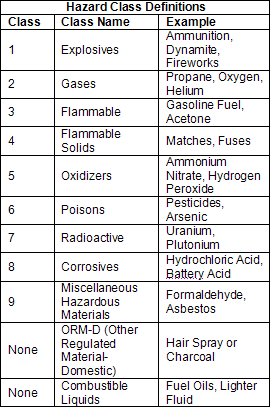Florida CDL Handbook: Loading and Trip Start
4. Transporting Passengers Safely
- 4.1. Vehicle Inspection
- 4.2. Loading and Trip Start
- 4.3. On the Road
- 4.4. After-trip Vehicle Inspection
- 4.5. Prohibited Practices
- 4.6. Use of Brake-door Interlocks
Do not allow riders to leave carry-on baggage in a doorway or aisle. There should be nothing in the aisle that might trip other riders. Secure baggage and freight in ways that avoid damage and:
- Allow the driver to move freely and easily.
- Allow riders to exit by any window or door in an emergency.
- Protect riders from injury if carry-ons fall or shift.
4.2.1 - Hazardous Materials

Figure 4-1
Watch for cargo or baggage containing hazardous materials. Most hazardous materials cannot be carried on a bus.
The Federal Hazardous Materials Table shows which materials are hazardous. They pose a risk to health, safety, and property during transportation. The rules require shippers to mark containers of hazardous material with the material's name, identification number, and hazard label. There are nine different four-inch, diamond-shaped hazard labels. See Figure 4.1. Watch for the diamond-shaped labels. Do not transport any hazardous material unless you are sure the rules allow it.
4.2.2 - Forbidden Hazardous Materials
Buses may carry small-arms ammunition labeled ORM-D, emergency hospital supplies, and drugs. You can carry small amounts of some other hazardous materials if the shipper cannot send them any other way. Buses must never carry:
- Division 2.3 poison gas, liquid Class 6 poison, tear gas, irritating material.
- More than 100 pounds of solid Class 6 poisons.
- Explosives in the space occupied by people, except small arms ammunition.
- Labeled radioactive materials in the space occupied by people.
- More than 500 pounds total of allowed hazardous materials, and no more than 100 pounds of any one class.
Riders sometimes board a bus with an unlabeled hazardous material. Do not allow riders to carry on common hazards such as car batteries or gasoline.
4.2.3 - Standee Line
No rider may stand forward of the rear of the driver's seat. Buses designed to allow standing must have a two-inch line on the floor or some other means of showing riders where they cannot stand. This is called the standee line. All standing riders must stay behind it.
4.2.4 - At Your Destination
When arriving at the destination or intermediate stops announce:
- The location.
- Reason for stopping.
- Next departure time.
- Bus number.
Remind riders to take carry-ons with them if they get off the bus. If the aisle is on a lower level than the seats, remind riders of the step-down. It is best to tell them before coming to a complete stop.
Charter bus drivers should not allow riders on the bus until departure time. This will help prevent theft or vandalism of the bus.
Check out our Customer Reviews!


